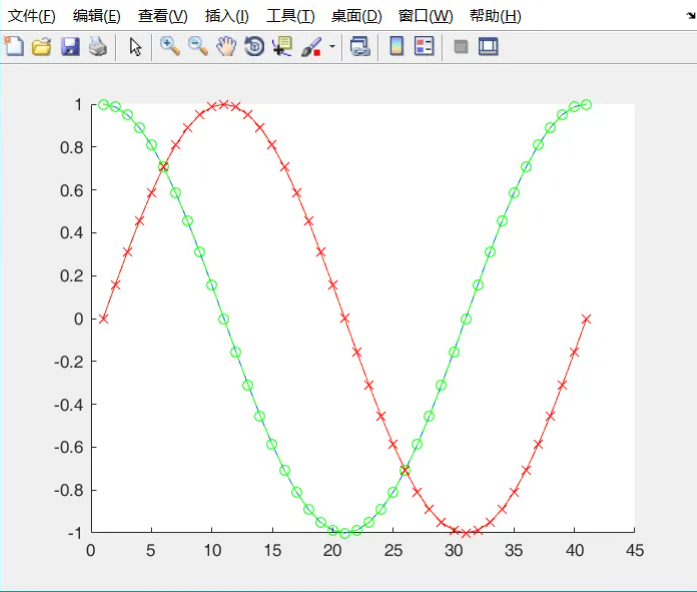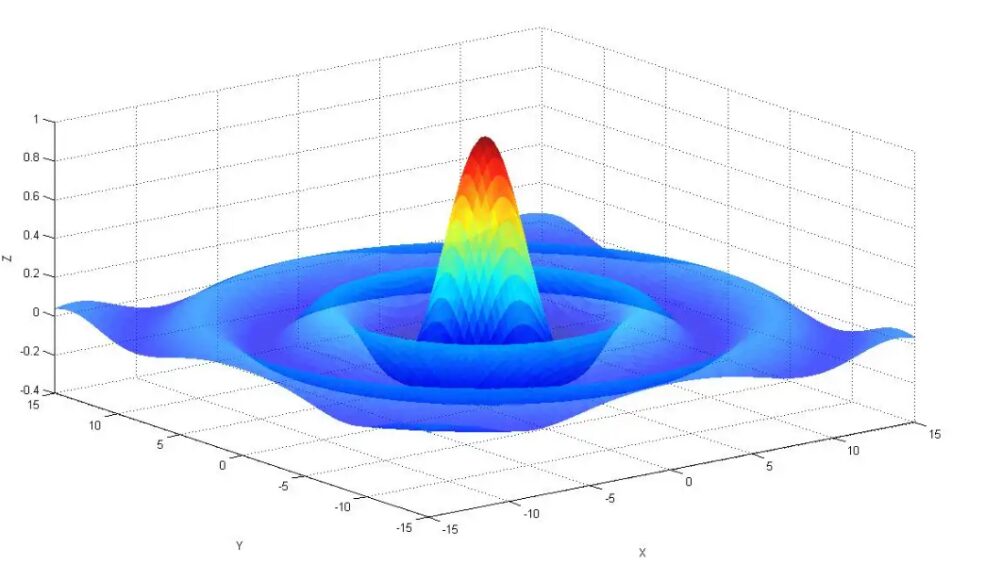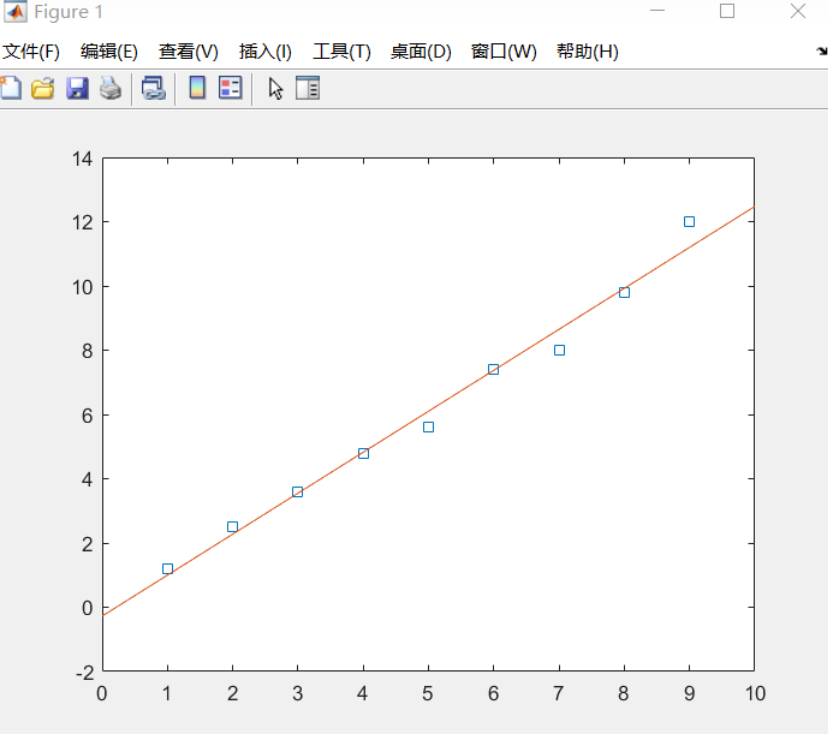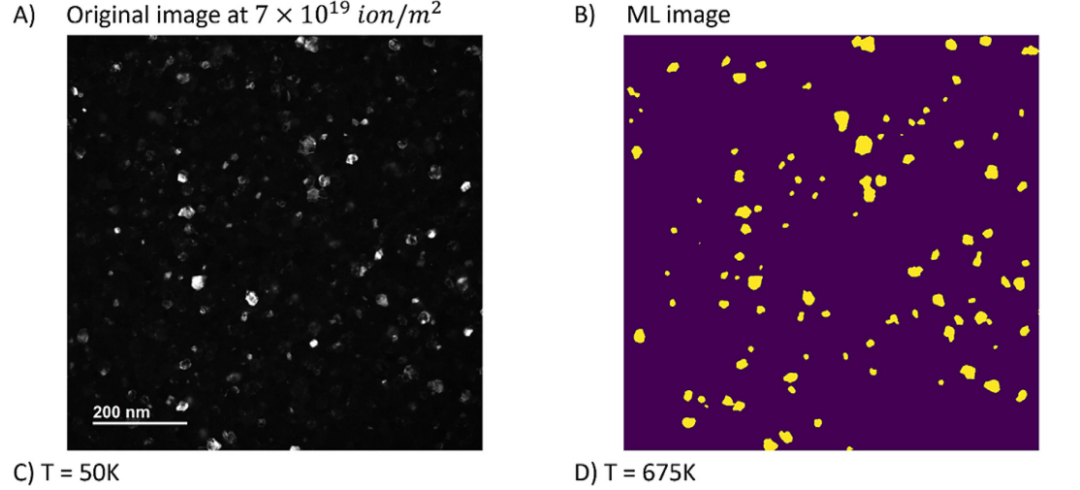
Click the blue text / Follow us
1. Introduction to Matlab
Matlab, short for matrix laboratory, is a high-tech computing environment primarily aimed at scientific computing, visualization, and interactive program design. It integrates powerful functions such as numerical analysis, matrix computation, scientific data visualization, and modeling and simulation of nonlinear dynamic systems into an easy-to-use window environment, providing a comprehensive solution for scientific research, engineering design, and various scientific fields that require effective numerical computation.
2. Applications of Matlab
(1) Plotting
Matlab can easily generate the desired plots, whether the plot is based on discrete data or continuous functions, you can have Matlab create it with just a few lines of code.
For example, a simple 2D plot:

Or a slightly more complex 3D plot:

In summary, Matlab can create a wide variety of plots, including line graphs, data distribution plots, discrete data plots, polar plots, contour plots, vector field plots, surface mesh plots, 3D visualizations, statistical graphs, etc. Moreover, complex plotting tasks can be accomplished with very short code.
(2) Numerical Analysis
Matlab has built-in numerous numerical analysis functions, allowing users to quickly implement the desired functionalities, such as:
Solving systems of multivariable linear equations, solving systems of multivariable nonlinear equations, solving differential equations, piecewise linear interpolation, data fitting, integral and differential solving, etc.

(3) Data Processing
Matlab integrates a vast array of excellent algorithms, which are the fundamental tools for data processing. The algorithms themselves are exceptionally complex and large, but as users of Matlab, we usually do not need to implement these algorithms ourselves, as Matlab has already provided them for us; we can run a particular algorithm with just a simple line or a few lines of code.
In the field of computer vision, Matlab integrates very advanced semantic segmentation algorithms, such as U-NET, SegNet, etc., which can segment the semantics of images:

In materials science, semantic segmentation can also play a significant role, such as using U-NET to denoise and highlight grain images captured by electron microscopy:

Since Matlab has integrated the U-NET algorithm, we can efficiently process images using Matlab.
Additionally, in terms of data prediction, Matlab also integrates very advanced algorithms, such as the Variational Autoencoder (VAE), which can perform deep learning based on existing data and predict the data we need.
For example, in October 2022, the Max Planck Institute used a variant of the VAE algorithm, WAE, in combination with materials science data and methods to conduct large-scale predictions of potential high-entropy alloys, thereby designing high-performance high-entropy alloys.
The above introduction to Matlab is just the tip of the iceberg of its capabilities; with over 30GB of Matlab, there is so much more that can be done.
3. Downloading and Installing Matlab
Matlab is an outstanding research tool. Fortunately, Chongqing University has purchased the usage rights for Matlab, and as major students, we can use it for free. We can install and use Matlab on our personal computers, and the installation method for the student version is as follows:

(2) Use the campus network and unified identity authentication to log in to the Student Cross-Innovation Center Software Authorization Service Center website (URL: https://lic.cqu.edu.cn) to apply for and download the Matlab software installation package.
In addition, there is a network version (lab version) license available for installation only in laboratories or computer rooms. If you need this, you can contact the administrator to apply: Administrator email [email protected]. (Subject note: Matlab lab version application)

Text and images by Li Jianxiu, Jian Siling
Typeset by Li Jieyu
Editors Jiang Jing, Fang Darui
Reviewed by Zheng Chaoyu
Guiding Teacher Tan Wenfeng
Previous Recommendations
1. Chongqing University’s Fifth “Senior Mentorship Program”
2. “Celebrating the 20th National Congress, Remembering Party History and Keeping the Original Intention” Submission Works Selection
